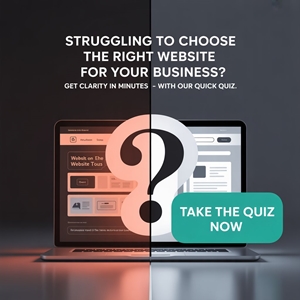All the software eating the world is built on zeroes and ones. The Binary by TechCabal is a weekly column about how technology collides with the complexity of everyday life, in good, bad and sometimes ugly ways. They’ll be told through human stories that reveal the systems behind them. Each edition will evolve in its understanding of the clean logic of tech produces grey consequences of modern living. New edition every Friday at 9:00 a.m. WAT. Subscribe here, and I’ll send you a personal email when the next one drops.
For the first issue, a Nigerian lifestyle brand was stunned: a first-time buyer had spent over ₦250,000 after finding them through ChatGPT.
There’s a kind of order you assume is fraud: first-time buyer, ₦250,000, leather goods. At Hingees, first-timers usually start small: a shirt, maybe a notebook. Not this time. The operations rep called to confirm, half-expecting silence on the other end. The voice on the other end confirmed the order.
The next twist came right after. The customer explained that they hadn’t found Hingees through Instagram ads, Google search, or a friend’s recommendation. She’d asked ChatGPT for Nigerian leather brands; Hingees showed up.
For Hingees, it was a single, unusual sale; for the internet, it hints at a much bigger shift. According to a recent global report, 2.1% of ChatGPT’s users turn to it for recommendations; travel, food, shopping, and more. For younger users especially, it feels like a search engine that talks back, less overwhelming, and somehow more trustworthy. Unlike a search engine that lists links and ads, chatbots like ChatGPT distill them into one conversational answer that feels personal.
“I have oily acne prone skin and I need a good sunscreen that won’t break me out,” Divine Akparoye, a ChatGPT user, asked. “Can you recommend some for me?” After a few minutes of chit-chatting, the chatbot made specific recommendations for her skin concerns, shared links to where she could buy it, and she did.
African small businesses have spent over a decade honing their visibility: Facebook and Instagram ads fine-tuned to taste, and clever SEO tweaks, as well as small structural hacks like tagging product photos and meta descriptions, which helped them appear higher in search results. Hingees, according to its founder, Hammed Okunade, was one of them: obsessive about clean metadata, tagged photos, and smart keywords.
But AI recommendations change the playbook. They condense the entire journey—research, comparison, and decision—into one friendly conversation. Ask a chatbot, get an answer, and maybe even a checkout link.
When the conversation becomes the checkout
That next step is already here. On September 29, OpenAI announced Instant Checkout for ChatGPT, a feature that consolidates everything from recommendations to payment into a single flow. It’s still being tested with U.S. ChatGPT users and a few merchants—the demo showcased Etsy and plans for Shopify—but it points toward something bigger: a future where your chatbot completes the sale, and it’s already started.
For small businesses online, this shift is like opening a new storefront overnight. The chatbot becomes a recommender, cashier, storefront, and gatekeeper all at once.
And it’s not guessing. A recent study found that large language models can mirror human purchase intent with surprising accuracy, even without sales data. The researchers showed that prompt context—especially framing and tone—shapes what the model thinks you want. Ask for “best Nigerian leather brands” and you’ll get one result; ask for “affordable leather gifts,” and you might get another.
Perhaps most strikingly, they note that this persuasive capacity emerges without explicit training; ChatGPT goes beyond understanding products to trying to mirror the psychology of wanting.
It feels equal parts promise and peril.
On one hand, a small brand that invests in quality metadata and product images can appear alongside larger brands, without paying Meta or Google for visibility. On the other hand, businesses that aren’t ‘machine-readable’ risk disappearing in a new kind of marketplace where the gatekeepers are algorithms built far from their reality.
For customers, though, it feels seamless. No tabs to juggle, no scrolling through endless options. Just a chat that ends with a purchase. It feels personal, but the convenience hides a risk: what happens when the model recommends irresponsibly, or worse, when sellers learn to game it?
It’s no coincidence that OpenAI’s first shopping partners are Etsy and Shopify; platforms already fluent in the language machines love: structured data, tagged photos, clean descriptions. That choice hints at a future where visibility may not be about who makes the best product, but who sits on the platforms the machines can easily parse.
And that’s the cliff edge for African SMEs. Many still sell through Instagram pages, WhatsApp messages, or Jiji listings. They’re built for human connection, not machine parsing. If they’re not plugged into the right platforms, the AI models might never see them at all.
A healthtech startup, Famasi Africa, still generated leads from ChatGPT even though, “we hadn’t really prioritised SEO,” said its co-founder and Product Lead, Faruq Akinwunmi. A customer in the Philippines was trying to find rare medication for a Nigerian relative without success. ChatGPT sent the customer to Famasi. People are asking questions, getting leads, and making purchases.
The pattern looks familiar
It feels like the early days of Google Search; open, frictionless, and full of promise. But history suggests that discovery platforms rarely stay neutral. They start as gateways and end as tollgates.
While it’s too early to say how this one will evolve, visibility could easily become pay-to-play again, just in subtler forms, through integrations, partnerships, and algorithmic trust. The difference this time is compression: your favourite chatbot doesn’t hand you blue links; it just distills the internet into a single blurb. The hierarchy is now one answer deep, and that single answer is shaped by whose data the machines can see.
While Google and Meta still dominate how small businesses get found online, the threat is already here. If people are asking chatbots for product recommendations and soon buying directly within those chats, then the search bar and sponsored posts might lose their grip. The ad that once chased you across the internet as it studied your interests might soon compete with a chatbot that remembers your last question.
For two decades, businesses fought to appear on the first page of Google, giving rise to an entire industry called Search Engine Optimisation (SEO). Experts believe that the same way brands once stuffed pages with keywords for Google, they’ll soon be designing content that chatbots can easily pull from.
Whatever the name this future is called—GEO, as in generative, or AEO as in answer—growth strategist Bukayo Ewuoso, who works in adtech and advises businesses, says it’s still early days, but the direction is clear.
A brand’s survival, he believes, will depend on how machine-readable it is: structured data, clean copy, and clear intent. In the age of Search, visibility was about being found. In the age of generative AI, it’s about being understood.
The pattern is clear: discovery on the internet is moving from search bars and feeds to conversation threads. OpenAI’s early e-commerce tests indicate where this could lead: structured marketplaces are likely to dominate in the early stages. But that’s just the beginning.
If chatbots become the first stop for finding products, the next logical step is autonomous AI agents that compare, negotiate, and buy.
For African SMEs, that future is both thrilling and unsettling. A chatbot could surface their products to buyers, but only if their digital footprint is legible to the algorithm. For everyone else, invisibility looms.
A few days later, the Hingees order was delivered. For Okunade, the real story of the sale is about how it happened. “I always thought large orders came from returning customers or ads,” he said, “and they still do. I just never imagined a chatbot would also be bringing us customers.”
His surprise carries the mood of this moment: a mix of curiosity and possibility. Today, it’s one order. Tomorrow, it could be the way most customers find their next brand.
Source: TechCabal | Read the Full Story…











